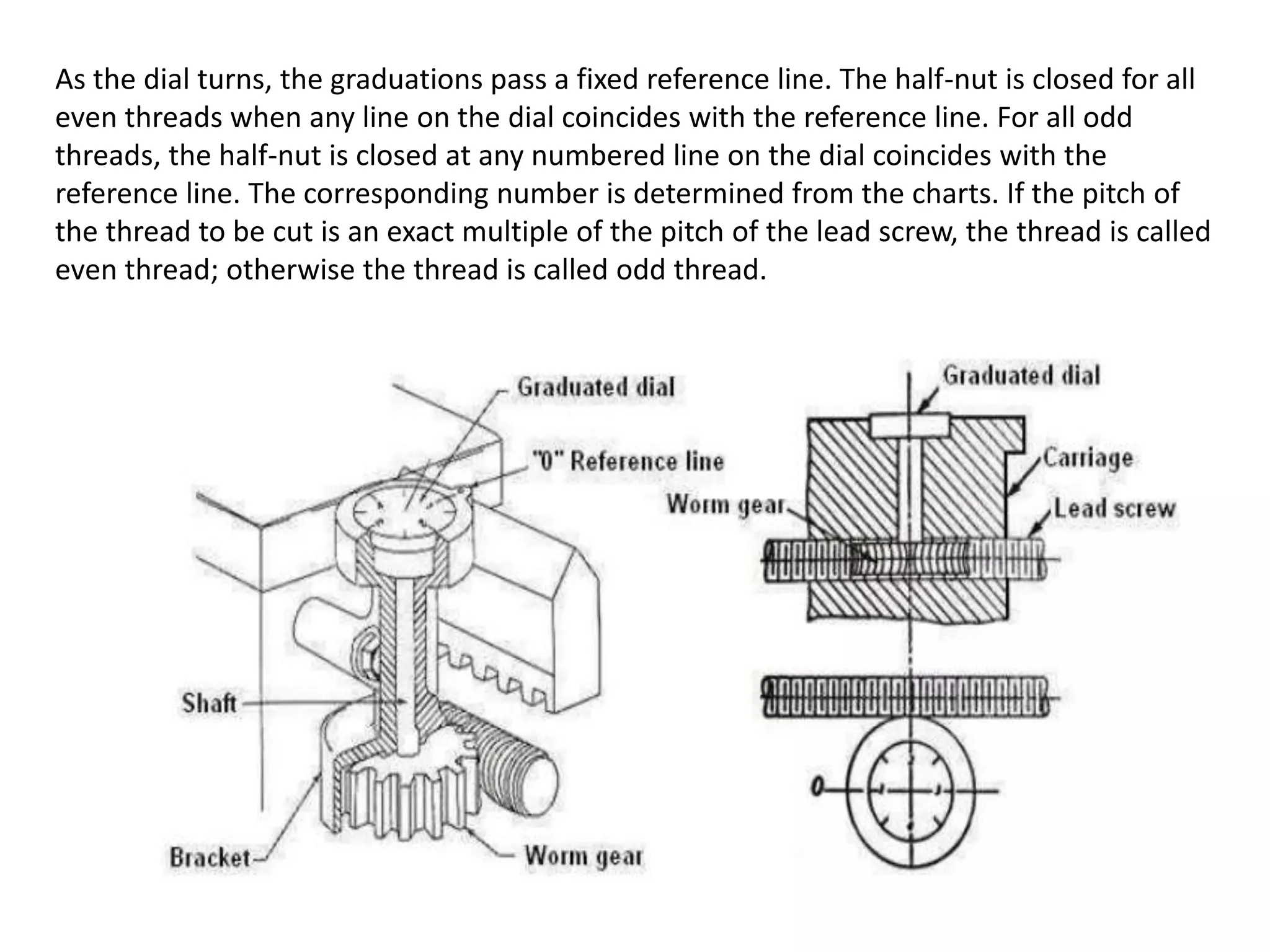A mandrel is a device used to hold and rotate hollow workpieces during machining operations. It is made of high carbon steel and has slightly smaller diameter ends to provide effective gripping surfaces. Different types of mandrels are used according to specific requirements. Centres are devices used in the tailstock to support workpieces. There are several types including ordinary, insert, half, pipe, ball, tipped, and revolving centres suited for different workpiece geometries and machining needs. Thread cutting on lathes involves generating helical grooves on cylindrical or conical surfaces using threading tools with the correct included angle for the thread type. It is done by synchronizing the longitudinal feed rate of the tool with the rotational speed of


























































